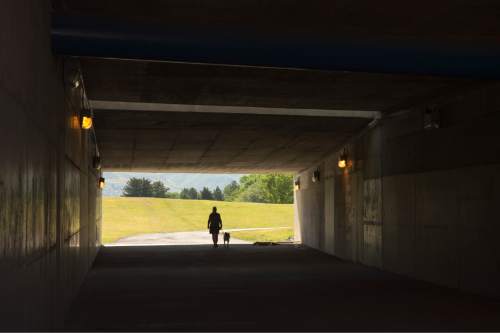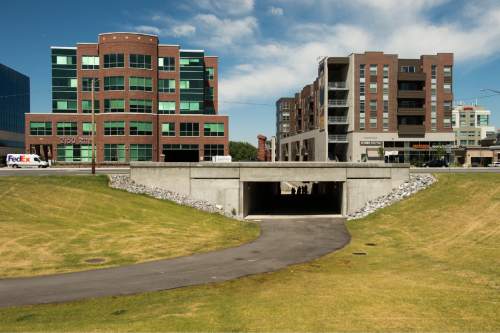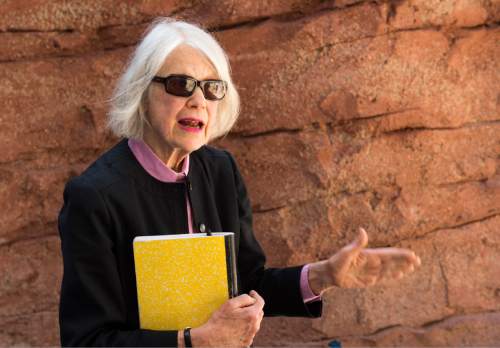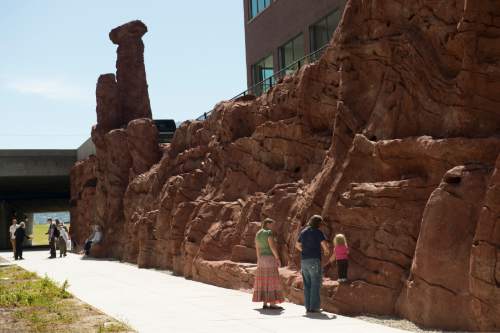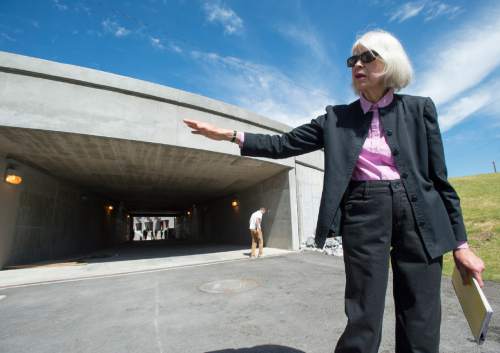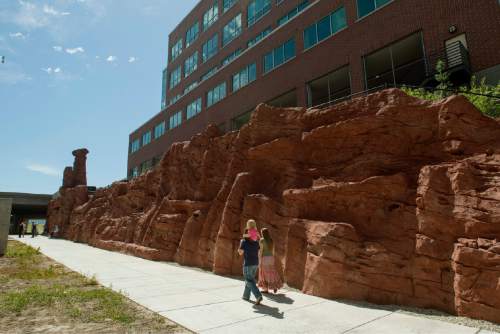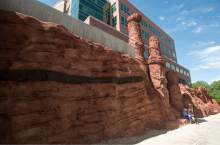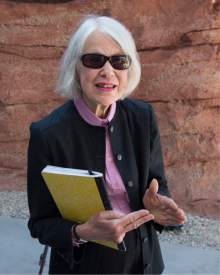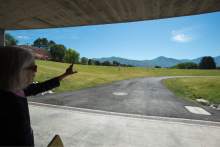This is an archived article that was published on sltrib.com in 2015, and information in the article may be outdated. It is provided only for personal research purposes and may not be reprinted.
One redrock canyon wall down, one giant sego lily to go.
World-renowned environmental artist Patricia Johanson was on hand Thursday for the completion of one of the dramatic aspects of The Draw at Sugar House.
The "Echo Canyon" design on Parleys Trail — just west of the tunnel that connects to Sugar House Park — is modeled after "The Witches" spires and other landmarks along the Mormon Trail. Some of its faux redrock peaks tower 30 or more feet above the popular biking and walking path.
The $500,000 wall is only part of the history lesson that Johanson plans for The Draw.
The other major piece of the art project is a planned sego lily, where tidbits of early Utah history will be etched into its three 30-foot-high petals at the east end of the tunnel. The creation would act as a flood basin for Parleys Creek at Sugar House Park. When completed, it would be the only public art in the nation that acts as part of a flood-control system, said Mary Kay Lazarus, who represents Johanson.
The "Echo Canyon" wall also was built to withstand floodwaters. The system would channel floodwater from the pond at Sugar House Park to the catch basin at the giant lily. It then would run down the tunnel through "Echo Canyon" and return to Parleys Creek at Hidden Hollow.
"I'm trying to invoke a pioneer journey," Johanson said Thursday as she looked over the "Echo Canyon" installation. "It's important in terms of the Mormon Trail."
The artist, who lives on a farm in upstate New York, hopes work on the sego lily can begin next year.
"The sego lily is the most important part of the project," she said. "It needs to happen quickly because this is part of Salt Lake City's flood infrastructure."
Construction cost of the sego lily could run as high as $2 million and must be built with private funds.
Stephen Goldsmith, University of Utah associate professor of planning and former Salt Lake City planning director, praised the project.
"Any time we can integrate art that speaks to place — tell a story — and build upon otherwise banal infrastructure, everybody wins."
Beyond that, Goldsmith said that Utah was fortunate to have Johanson's signature on public art.
"People in Utah don't realize what a pioneer she is," he said. "In U.S. art history, she is a major leader."
The project has been a long time coming, said Suzanne Weaver of the Parleys Rails, Trails and Tunnels (PRATT) Coalition that has guided the construction of the trail.
"I think this is fabulous," she said of Johanson's design. "We've been waiting for this day. The Draw is the jewel in the pearl necklace [of Parleys Trail]."
Sugar House resident Diana Hart beamed at the multifaceted project.
"It's a win for history and a win for beauty," she said. "It's also a win that solves a city problem, and we have a win for education because kids can come and see this."



